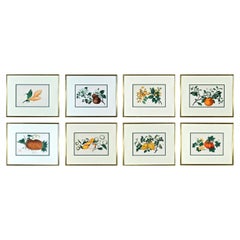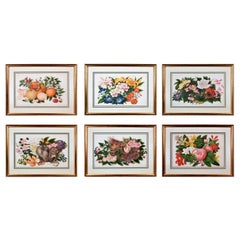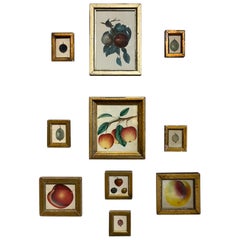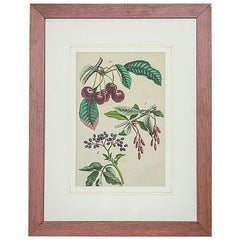Items Similar to Group of Eight Exotic Fruit.
Want more images or videos?
Request additional images or videos from the seller
1 of 9
UnknownGroup of Eight Exotic Fruit.1880
1880
$11,433.58
£8,500
€9,870.30
CA$16,094.87
A$17,584.14
CHF 9,215.91
MX$209,960.25
NOK 116,628.21
SEK 108,753.38
DKK 73,715.35
About the Item
[CHINESE SCHOOL].
Group of Eight Exotic Fruit.
19th century, c.1880.
Group of eight watercolour and gouache pith papers of Exotic Fruits, edged in turquoise silk ribbon and laid on paper. Framed and glazed, overall size: 32.2cm by 24.1cm.
Pith seems not to have been adopted for painting until about 1820. Some European museums claim that their paintings on pith (often erroneously called ‘rice paper’ or ‘mulberry pith’) come from the end of the eighteenth century but there do not seem to be any dateable examples that are so early. There is a record of the Kaiser Franz of Austria buying some albums from an English Consul-General Watts in 1826. We know of an Italian Count who visited Canton in 1828 and had over 350 paintings on pith in his baggage when he died in Ambon two years later. In the British Library there is a scrap-book containing six pith paintings and a journal entry by a serving British officer who sent them home from India in 1829. These examples and contemporary accounts by visitors to Canton suggest that there was a flourishing trade in pith paintings by the early 1830s.
Pith presumably came into use for painting to satisfy the increasing demand for small, inexpensive and easily transported souvenirs, following the massive growth in the China Trade in the first quarter of the nineteenth century. Paintings in oils, on board and canvas were costly and difficult to carry home. Earlier and more prestigious export water-colours had often been on a larger scale and painted on fine Chinese paper or on paper imported from Europe. The albums of pith paintings (and later the little glass-fronted boxes) were inexpensive, light, easy to pack and gave the pictures some protection on the long voyage home. Because many were sold in albums and hence protected from the light, they retain their bright colours to this day.
Pith comes from the central column of spongy cellular tissue in the stem of a small tree called Tetrapanax Papyrifera, native to south-west China. It has had a variety of uses, some going back many centuries. At the imperial court both men and women wore coloured flowers made from pith in their hair. For use in painting, it is cut by hand with a knife into thin sheets from short lengths of the spongy tissue. Cutting is highly skilled and the constraints of the process mean that the finished sheets for painting seldom, if ever, measure more than about 30 by 20 cm. The sheets are dried, trimmed and used for painting without any further processing.
Because of the nature of pith and its cellular structure, the gouache used by the Chinese sat on the surface and produced a bright and even sparkling effect. Very fine detail could be achieved but pith did not lend itself to the flat wash of colour favoured for European watercolours.
Carl Crossman in his book The Decorative Arts of the China Trade (originally published under the title The China Trade) gives an excellent list of export painters with a note of those known to have painted on pith. These include Tingqua, Sunqua and Youqua. From 1757 until 1842 Canton was the only Chinese port open to trade with the west and it is no surprise that of the eight studios identified by Crossman as producing works on pith, six were in Canton.
It seems that the 1830s and 1840s may have been the heyday of pith painting. The international trading bases, the waterfront 'factories' on the 'Hongs' in Canton, where they were produced, were partially burnt during the First Opium War (1839-41) and totally destroyed in a fire of 1856. The foreign trading companies then moved to Honan and subsequently put up splendid new offices on reclaimed land at Shamian Island, a little up river. As the result of the Treaty of Nanking, in 1842 additional Chinese ports were opened up for foreign trade and Hong Kong was established as a major trading centre.
By 1860 references to China in the Illustrated London News, plentiful three years earlier, were few and far between. That is not to say that painting on pith ceased. Nicholas the second was given paintings on pith when he visited Canton in 1891 and the last Emperor is said to have sent him a gift which included pith paintings in 1907 (though these could have been examples of much earlier work).
Painters on pith did not in general sign their work (the sole exception is Sunqua whose name can be found on the face of three paintings on pith).
There are collections of paintings on pith in the Ashmolean, the British Museum, the Fitzwilliam, the Hermitage, the Peabody/Essex Museum in Massachusetts and the Hong Kong Museum of Art. However, because paintings on pith are not in general regarded as fine art, they are usually to be found in ethnographic or specialised collections.
- Creation Year:1880
- Dimensions:Height: 9.25 in (23.5 cm)Width: 12.75 in (32.39 cm)Depth: 0.75 in (1.91 cm)
- More Editions & Sizes:9.25 x 12.75Price: $11,434
- Medium:
- Movement & Style:
- Period:
- Condition:Some small nicks to the pith paper and the occasional spotting, otherwise good.
- Gallery Location:London, GB
- Reference Number:Seller: 993691stDibs: LU141927926852
About the Seller
5.0
Vetted Professional Seller
Every seller passes strict standards for authenticity and reliability
Established in 1979
1stDibs seller since 2020
19 sales on 1stDibs
Typical response time: 5 hours
- ShippingRetrieving quote...Shipping from: London , United Kingdom
- Return Policy
More From This Seller
View AllA Group of Six Pears.
By Pierre Jean François Turpin
Located in London, GB
POITEAU, A. and P. TURPIN.
Traité des arbres fruitiers: A Group of six Pears.
H. Perronneau for T. Delachausée, Paris, 1807-1835.
A group of six stipple-engraved plates printed in c...
Category
Early 1800s Naturalistic Still-life Prints
Materials
Engraving
$9,736
PRÉVOST. Print from a Collection des Fleurs et des Fruits
By Jean Louis Prévost
Located in London, GB
Original stipple engraving by Charles-Louis Ruotte, printed in colour and finished by hand.
[Paris, 1805]
Prévost came from a long line of French artists spanning 400 years. Jean-...
Category
Early 1800s Naturalistic Still-life Prints
Materials
Color, Engraving
PRÉVOST. Print from Collection des Fleurs et des Fruits
By Jean Louis Prévost
Located in London, GB
Original stipple engraving by Charles-Louis Ruotte, printed in colour and finished by hand.
[Paris. 1805]
Prévost came from a long line of French artists spanning 400 years. Jean-Louis himself first exhibited at the Salon when only fourteen years of age, showing paintings of bouquets, a vase of flowers and other small botanical studies. Immediately he was commissioned by Monsieur Roussel to paint the flowers in the wealthy landowner's garden.
The result was a 12-volume work of gouache studies, entitled "Hortus Cellensis", and was at once acquired by the Paris Natural History Library.
Prévost's "Collection des Fleurs et Fruits...
Category
Early 1800s Naturalistic Still-life Prints
Materials
Color, Engraving, Handmade Paper
[CHINESE EXPORT WATERCOLOURS ON PITH PAPER]. - Botanical Studies
Located in London, GB
[CHINESE EXPORT WATERCOLOURS ON PITH PAPER].
A Group of 10 Flowers and Butterflies.
mid to late nineteeenth century.
A fine group of Chines...
Category
Late 19th Century Naturalistic Figurative Drawings and Watercolors
Materials
Watercolor, Gouache, Rice Paper
GALLESIO. A Group of Six Grapes.
Located in London, GB
Six hand-coloured plates of Grapes, printed in colour and finished by hand. Framed and glazed, overall size: 42.5 by 57.5cm. Pomona Italiana Ossia Trattato Degli Alberi Fruttiferi...
Category
1810s Naturalistic Still-life Prints
Materials
Handmade Paper, Engraving
POITEAU/TURPIN. Traité des arbres fruitiers: A Set of Four Apples
By POITEAU, A. and P. TURPIN.
Located in London, GB
POITEAU, A. and P. TURPIN.
Traité des arbres fruitiers: A Set of Four Apples
H. Perronneau for T. Delachausée, Paris, 1807-1835.
A set of Four Apples, fine stipple-engrave...
Category
Early 1800s Naturalistic Still-life Prints
Materials
Engraving, Handmade Paper, Watercolor
You May Also Like
Chinese Watercolors of Exotic Fruit on Pith Paper- A Set of Eight
Located in Downingtown, PA
The Chine trade watercolors are of fine quality and depict various exotic fruits including pineapples, lychees, finger citrus and orange amongst others. Now framed with a thin gilt f...
Category
Antique Mid-19th Century Chinese Chinese Export Paintings
Materials
Paper
China Trade Set of Six Sunqua Still Life of Fruit & Flowers Paintings
By Sunqua
Located in Downingtown, PA
China Trade set of six Gouache Still Life Paintings of Fruit & Flowers on Pith Paper,
Each Signed Sunqua,
mid-19th century
The fine China Trade pith paper painting...
Category
Antique Mid-19th Century Chinese Chinese Export Paintings and Screens
Materials
Paper
19th Century Hand Colored Fruit Botanicals In Gilt Wood Frames, Group of 10
Located in Stamford, CT
19th century American framed still life depictions of fruit, set of 10.
Group of 10 small framed still life depictions of fruit, to include: watercolor
theorem depicting apples on a...
Category
Antique Early 19th Century American Regency Decorative Art
Materials
Giltwood, Paper
20th Century Colorful Graphic/Tree Fruits
Located in Opole, PL
We present you one of the six graphics with depictions of garden plants from the same series.
This graphic is framed in a wooden frame with glass.
Each item from the series is av...
Category
20th Century Prints
Materials
Paper
$189 Sale Price
20% Off
China Trade Watercolor & Gouache Set of Twelve Paintings of Fruit & Flowers
Located in Downingtown, PA
Chinese Export Botanical Paintings on Pith Paper
Guangdong Province,
A Set of Twelve,
Circa 1850
This complete and beautifully preserved set of twelve botanical still lifes is a su...
Category
Antique Mid-19th Century Chinese Chinese Export Decorative Art
Materials
Paper
Mid 19th Century Oil - Still Life of Various Fruits
Located in Corsham, GB
A charming still life of various fruits displayed together, in it we can see a pineapple which has been viewed as a sign of wealth during these times. Although unsigned the work has ...
Category
Mid-19th Century Still-life Paintings
Materials
Oil
$305 Sale Price
20% Off
More Ways To Browse
Exotic Art
19th Century Chinese Painting On Silk
Antique Silk Ribbon
Pith Paper
Antique Light Box
Pith Paintings
19th Century Chinese Rice Paper Paintings
Abstract Reclining Sculpture
Agustin Cardenas
Anne De Villemejane
Astronaut Sculpture
Bamboo Pen
Bill Hemmerling
Blue Dog Original
Boy Horse
Brandon V Lewis
Bronze Of Ballet Dancers
Bronze Round Sculptures
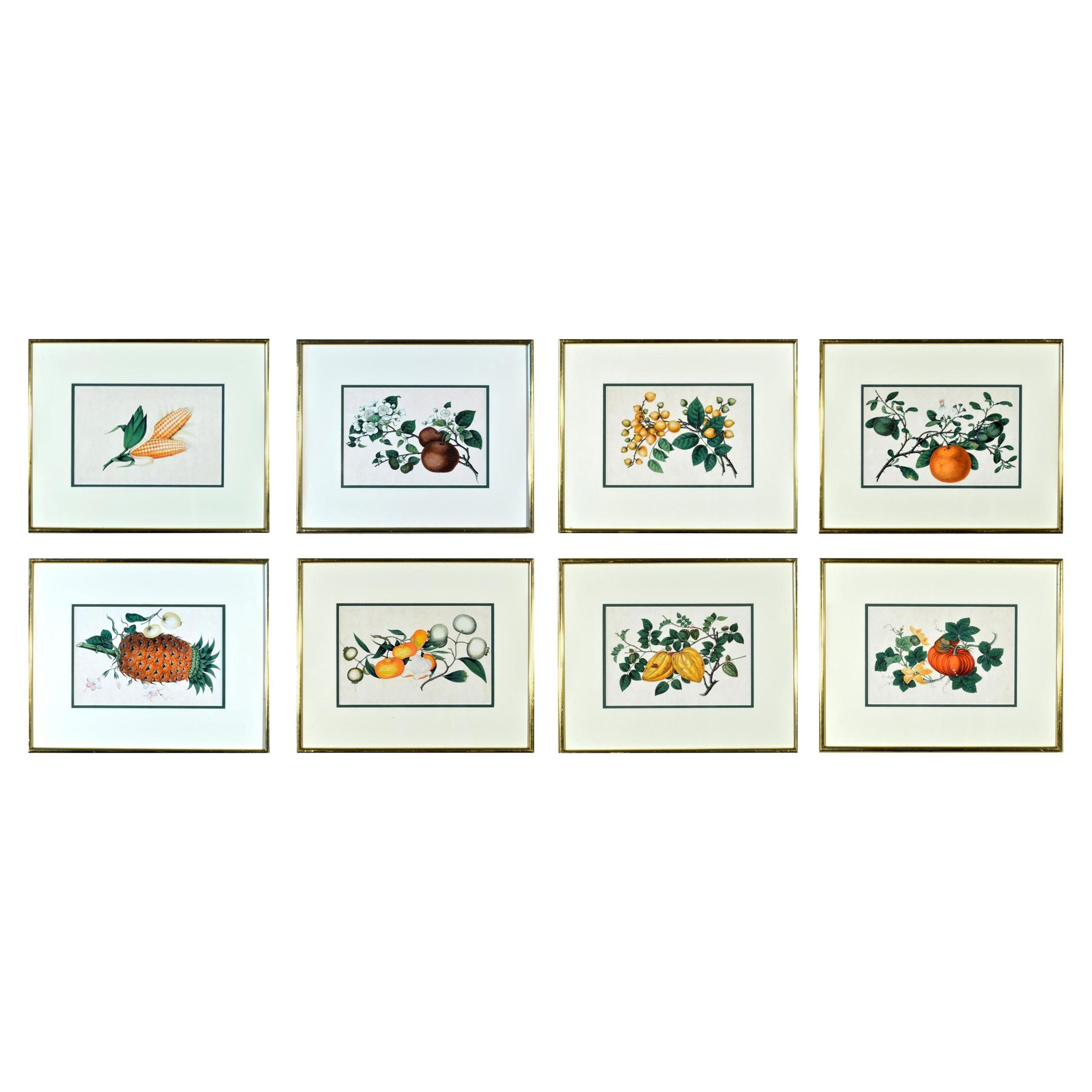
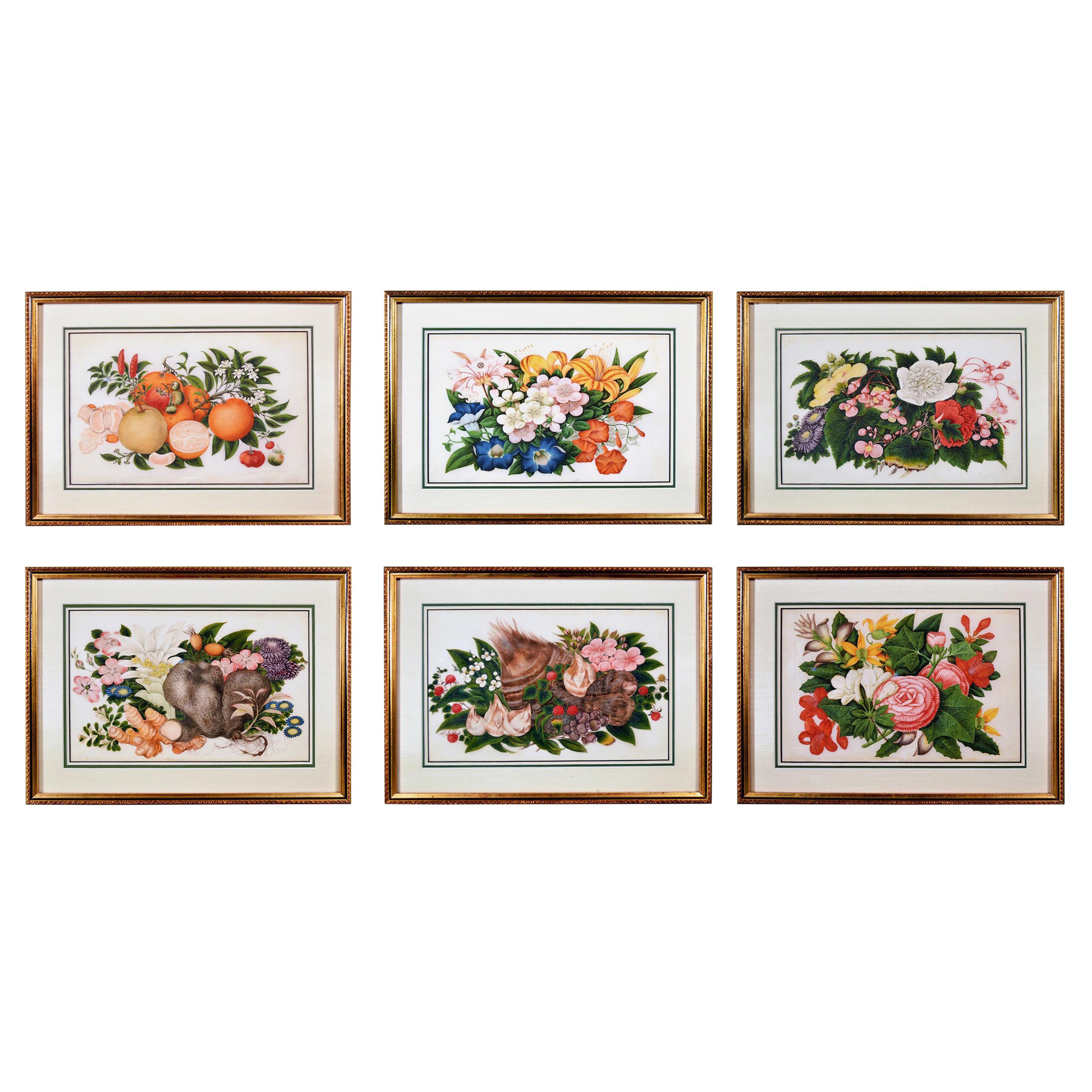
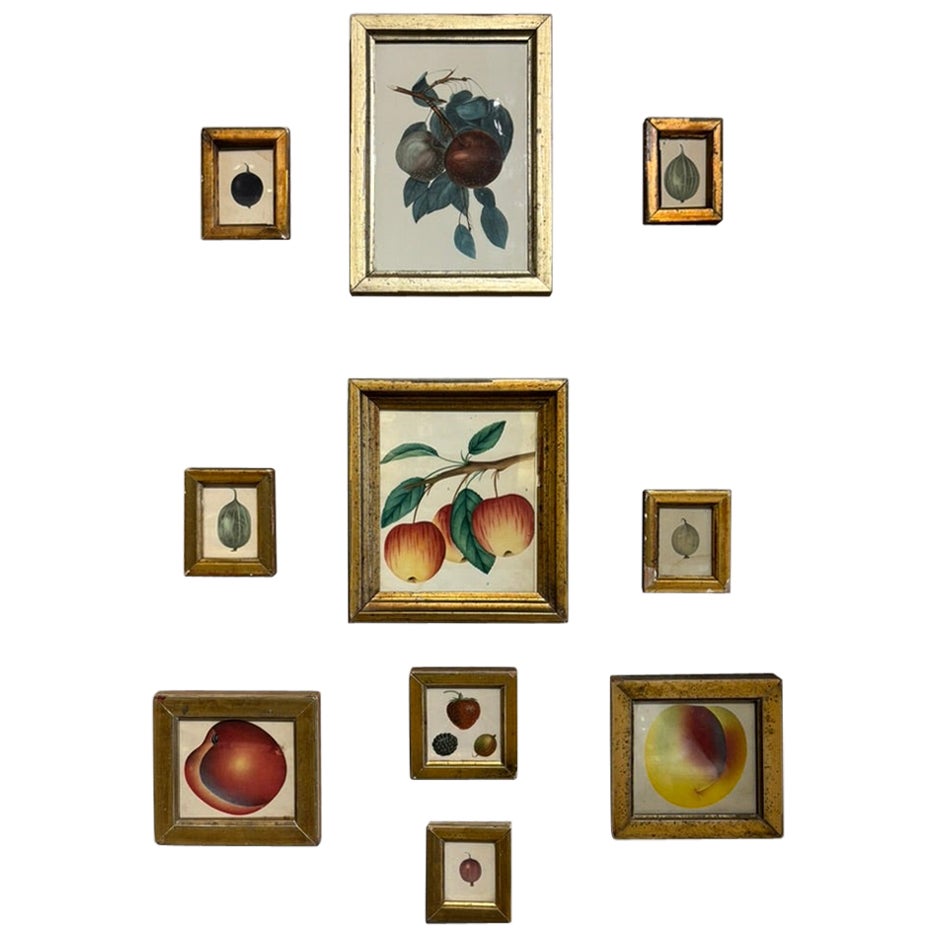
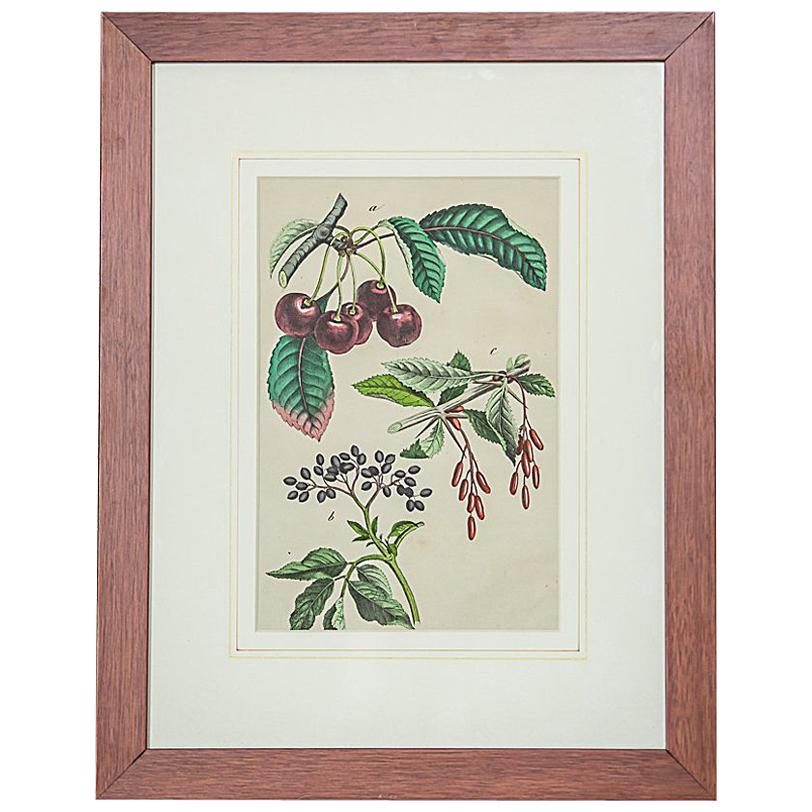
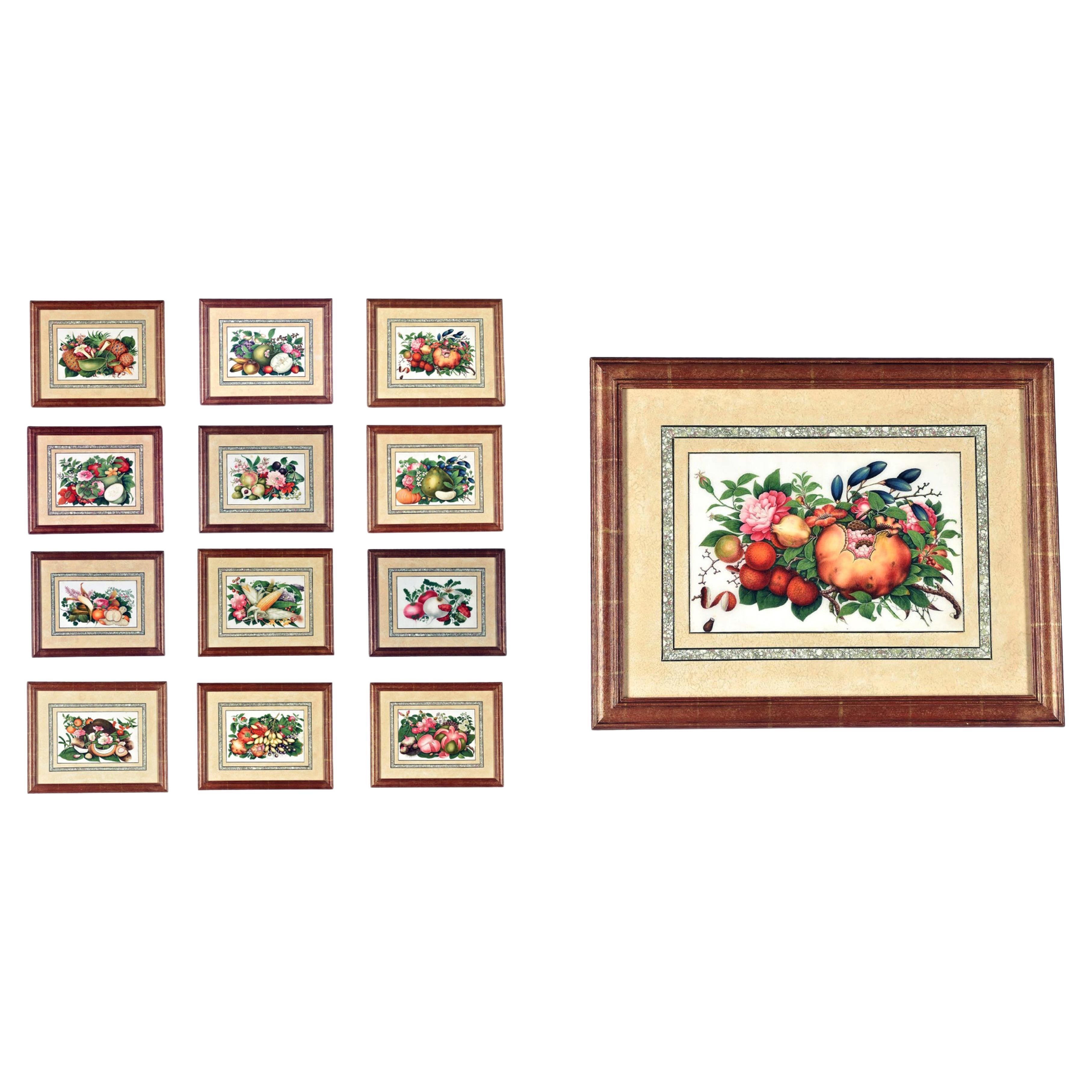
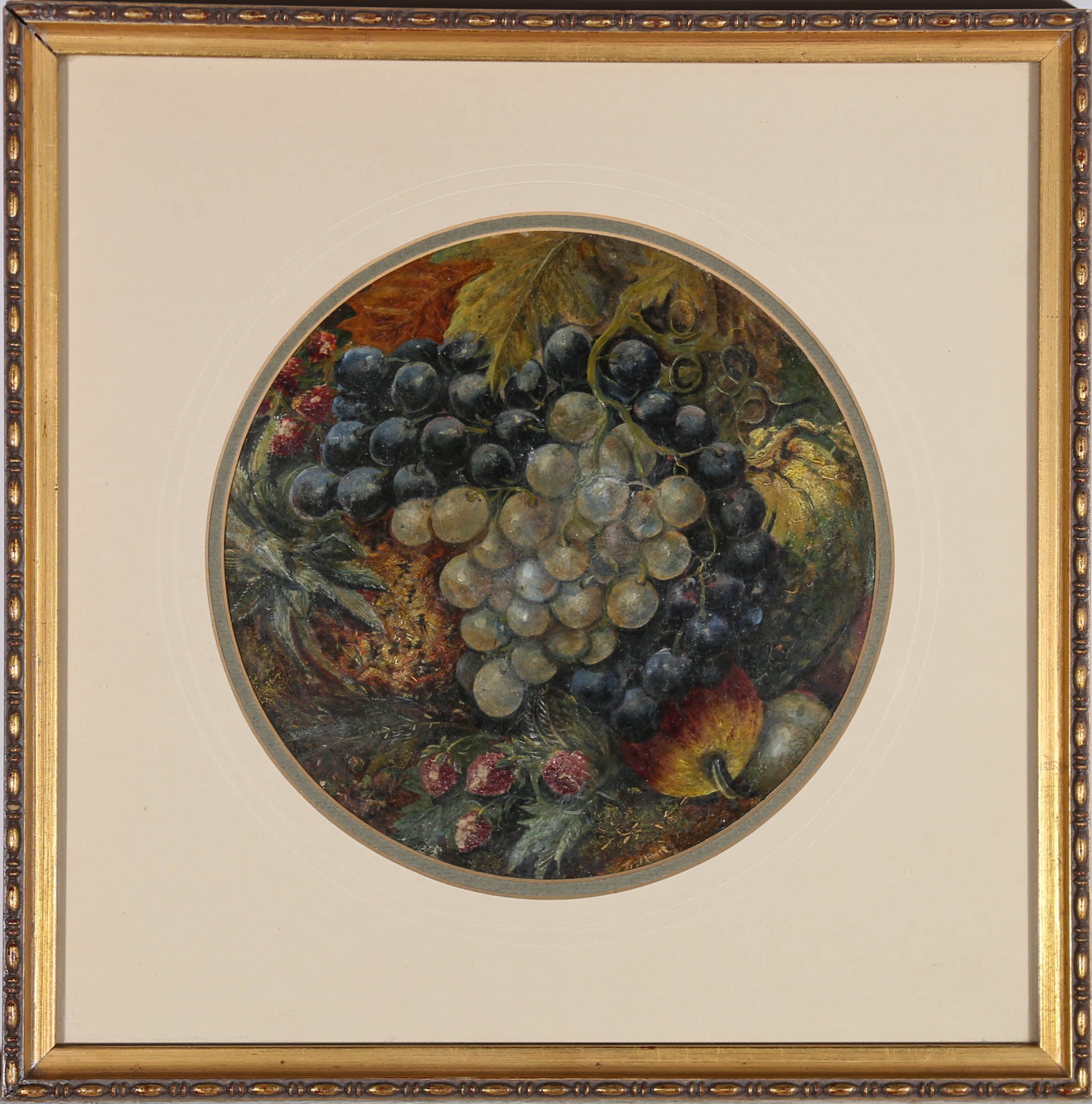
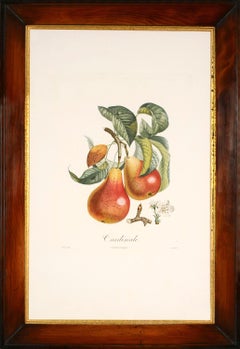
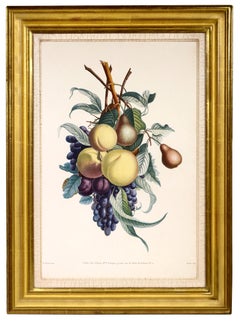
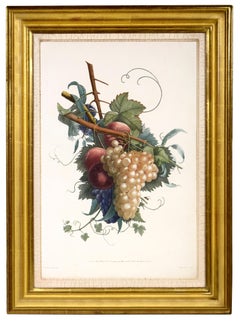
![[CHINESE EXPORT WATERCOLOURS ON PITH PAPER]. - Botanical Studies](https://a.1stdibscdn.com/a_14192/1683202071473/101715_20_master.jpg?width=240)
